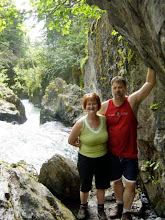
Reflection: Week 8 ~
Instructor: Kathryn Arnold
EDUC-6711I-1 Bridging Learning Theory, Instruction, and Technology
My personal theory on how students learn is still very eclectic. It is based on a combination of many theories. I utilize a lot of teaching strategies from Jean Piaget and Howard Gardner. I believe each child has a unique learning style and I address the different styles by using the multiple intelligences approach. I am also aware that the quality of learning is based on a variety of elements: environmental factors, psychological factors and personal filters (Lever-Duffy & McDonald, 2008).
I use a Smartboard in my class and, next year, I will be adding Clickers. Clickers will give my students a fun way of assessing their knowledge. By using this technology my students will have instant feedback. Another benefit is the assessment will immediately identify students that grasp the concept and other students that need the concept re-addressed to them.
Another technology tool I want to incorporate into my classroom is Concept Maps. Students will be able to take an abstract topic and visually organize it. They can also use prior knowledge to connect different concepts.
This course has helped spark new ideas on how to engage my students. The first long-term goal I have is to create a Blog or Wiki site. My students will use this site to creatively inform other classes about the wonderful state we live in. I would like to cooperate with another school in a different state and have their students write about their state. I would like the students to communicate to each other about questions they may have regarding each other’s states. As a final project I think it would be exciting for the students to have a video conference via SKYPE.
I will clearly write out my goals and objectives for this project and present it to my principal. Once I am given approval I will contact other schools to see if anyone is interested in collaborating with my class. My students will create digital flyers that I can post on different educational blog sites regarding our project. Once I have connected with another teacher and state I will send a newsletter home to parents and let them know about the project.
My second goal isn’t as lofty as my first goal. I would like to teach my students how to create iMovies as a reflection portfolio of their learning in third grade. This would be a yearlong project that my students would present to their parents during the 3rd quarter student-led parent teacher conference. Along with iMovie my students would use Photo Booth to record their experiences. I believe this will motivate my students to have higher expectations. It will give them an opportunity to reflect on the growth they have made and share this with their parents.
At the beginning of the year I will provide my students with a rubric that will outline my expectations for this project. Each month the students will gather artifacts to include in their portfolio. They will either use the class camera or Photo Booth to capture their artifacts. The student will be given time during the computer lab or in class to work on this project.
I consider myself a life-long learner. I will continue to gain knowledge on the technological world around us throughout my Master’s program. Through my training I will gain new insights on integrating new and innovative technologies into my classroom. I believe it is possible to effectively teach the fundamental skills while creatively incorporating technology. By moving forward and changing the educational environment I believe all students will be excited about their learning as well as better prepared for their future.
References
Lever-Duffy, J. & McDonald, J. (2008). Theoretical Foundations (Laureate Education, Inc., custom ed.). Boston, MA: Pearson Education, Inc.





